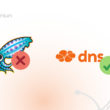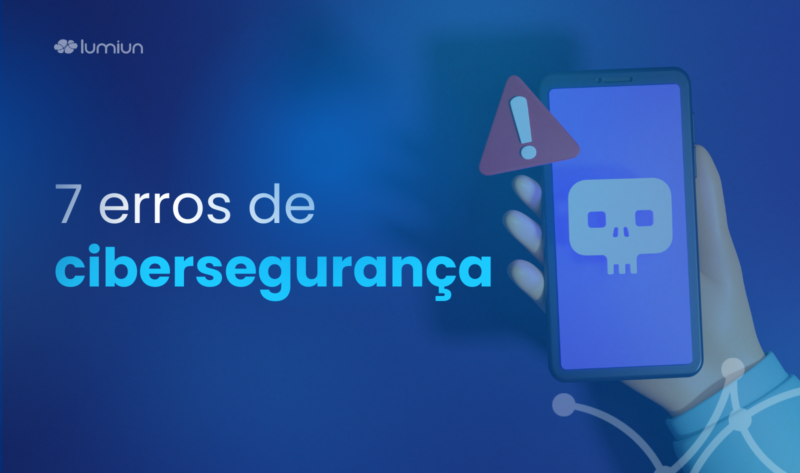The use of the internet has become almost unanimous within companies of all segments. With the help of this tool, it is possible to perform tasks of all kinds and ensure that the company remains competitive in the market. However, making cybersecurity errors can put everything to lose, exposing sensitive information and impairing the smooth running of everyday tasks.
For this reason, it is essential that these companies take essential care for the internet to be used with intelligence and safety, so that productivity is maintained and that information is protected at all costs. And this concern should also be extended to small and medium -sized companies.
It is a fatal error underestimate the impact that cyber attacks can have on smaller companies. This is because over the years cybercriminals have failed to focus their activities only in large companies and have also made attacks on smaller companies , causing major damage and causing these companies to spend a lot of money to recover from damage.
In this sense, it is necessary for these companies to invest in cybersecurity to be protected and avoid such damage to their business. With the arrival of the General Data Protection Law , penalties against companies that do not pay attention to basic information security requirements have become substantial, making the adoption of protection tools that fit the legislation and business needs.
Cybersecurity: What is the role of this strategy within your business?
According to the 2024 global threat report issued by Crowdstrike , the 2023 cybersecurity scenario demonstrated a wide variety of diverse and sophisticated cyber attacks. Data extortion and ransomware were one of the main focuses of cybercriminals in the last year, making an even larger number of victims.
The results of this research have shown a growing concern with attacks that exploit vulnerability of devices and systems to avoid detection, highlighting the need for extra care by companies. Rapid technological development has caused smaller companies not focusing their efforts on protective strategies, ended up exposed to cyber attacks of various types.
The good news is that the development of more affordable and intuitive tools has allowed these companies to implement a smarter protection strategy, avoiding the main cybersecurity errors that put their information so much at risk.
We need to understand that regardless of the industry, companies deal with sensitive data all the time, from customer registration, employees to contact with their suppliers and partners. Protection of this information should be a priority within business , avoiding not only the penalties imposed by the general data protection law , but also the damage caused to your image before consumers.
What are the main risks of current cybersecurity?
Just as we have more modern and smart technological tools, cybercriminals also develop more complex solutions to apply cyber scams of various types. In this sense, strategies of various types are implemented to cause problems with inattentive users, as we will see below:
Data leakage
Companies dealing with sensitive data have data leakage as the main risk in routine and performing daily activities. LGPD penalties , but it can also have legal consequences for this organization.
Protection of sensitive and confidential data should be a priority within companies dealing with this information, adopting tools and strategies that prevent this information from being exposed. Adoption of more complex passwords and encryption can be a useful solution to prevent fundamental and confidential data from being used by unauthorized users.
Phishing
Phishing attacks are the oldest on the internet, and consist of the strategy of deceiving the user if a well -known sender or company related to the victim. Through this attack, the user receives an email requesting confidential information such as password access credentials or financial data.
To seem legitimate, the cybercriminal uses addresses very similar to the real and masks the profile and appearance of the email so that it is as similar as possible with the original. This type of attack can cause numerous losses beyond financial losses, as well as the leakage of information and the installation of malicious applications on the company's devices.
Ransomware
The kidnapping, ransomware , is one of the most used cyber attacks today. Through this type of attack, the cybercriminal blocks or encrypts the confidential information of a company and requests the payment of a redemption.
In most cases the payment of these redemption is charged in cryptocurrencies , making it difficult to track this money. Companies from various segments suffered substantial financial losses with this type of attack, impairing not only the functionality of their daily lives but also their image before the consumer.
Spyware
Spyware attacks aims to monitor the digital behavior of a network or device of a company. Through this type of application, the cybercriminy can view in real time everything that is done on the devices and also the confidential information that is exchanged among users.
Although in a way this type of application may seem harmless, Spyware can steal confidential data and strategic information from the company , causing great damage to its growth and competitive positioning in the market.
Ddo attack
Distributed Denial Denial Attacks, DDOS , aims to prevent legitimate users from being able to access a company's networks or services. Overwhelming the company's website or platform, cybercriminals can completely unavailable the demand of a business, causing major financial losses.
Large attacks can last days and even weeks, representing great damage. To avoid this type of attack you need to have a specific protective tool that helps monitor traffic and identify suspicious behaviors in the type of access that is performed on your company's platform or service.
National Cybersecurity Panorama
The massive advance of cyber attacks in recent years has shown companies of various segments that concern for cybersecurity should be a priority. For this reason, investments with security tools have grown considerably , showing that companies began to worry about the confidentiality of information and data security within the business.
According to a survey conducted by Fortnite in 2023, only in 2022 Brazil suffered 103. 16 billion attempts at cyber attacks , worrying data that raised relevant questions for companies regarding their protection strategy. The year 2023 closed with more than 161 billion cyber attacks, according to Trend Micro , representing a record.
The cyber defense index published by Insights brought worrying data on the defense strategy of Brazilian companies. According to the survey, Brazil is in an unfavorable position in terms of cybersecurity, being among the countries with lower investment in cybersecurity , even after the demands brought by the pandemic and after the advent of the General Data Protection Law.
Walking slowly towards more robust cyber strategies and policies , Brazil was only behind Turkey and Indonesia. Research such as this shows that many national companies are not yet properly concerned about protecting their information, endangering confidential data and bringing a major concern about their cyber protection strategy.
What are the main risks of cybersecurity for small and medium enterprises
As we have seen earlier, your company can be unnecessarily exposed by not adopting intelligent and effective cybersecurity strategies. In addition to a major concern for financial losses that may come from financial fraud and penalties imposed by the General Data Protection Law, there is a wide range of problems that can be caused by cyber attacks.
Attacks of this type can considerably impair the image of your company in the market. In addition to causing a great dissatisfaction because of customers who can have their data exposed, cyber attacks impair the company's image to the competition making future consumers consider other alternatives rather than closing business with your organization.
We also need to remember that the general data protection law includes exposure of companies that have suffered penalties as one of their punishments, being a way to avoid further failures. This public exposure contributes nothing to your company's recovery after a cyber attack, showing that avoiding this type of situation is the most important.
Seven errors that put your business at risk
To be able to adapt and establish improvements, you need to know where the error is. For this reason, we have separated the seven cybersecurity errors that can put your business and at risk and cause numerous problems for the smooth running of your activities:
1. Underestimate cyber attacks and their consequences
It is first necessary to understand cyber attacks and what problems they can cause for your organization. As we said, there are cyber attacks of various types, each with the different goal according to the strategy implemented by the cybercriminal, so that the more knowledge you get about this attack the easier to prepare.
Unlike what has been thought for many years, cyber attacks are no longer intended only for large companies, and it is also the responsibility of small and medium enterprises to establish improvements to ensure protection of their information and prevent exposure of their data.
2. Lack of investment in cybersecurity
Investing in cybersecurity is no longer just a IT -oriented strategy to become a requirement for the organization's success. Failure to invest in this protection protocol is a big flaw that can cause a damage to your business.
In this sense we are referring not only to protective applications and resources, but also to the devices and team prepared to deal with cybersecurity situations.
3. Inadequacy to LGPD
The general data protection law is already in force and has brought in its text several requirements that must be implemented by companies to ensure greater protection of information. These requirements should be adopted by organizations to avoid most digital security problems and ensure that the company is in accordance with what is specified by the law.
Lack of adequacy can generate fines and penalties for the company, and it is essential to implement all the necessary improvements and adjustments to maintain the compliance of your organization. If necessary, a specialized company can be hired to evaluate the needs and improvements that must be implemented within your business for a complete suitability to LGPD.
4. Update of application systems
Systems and applications updates are developed with the main focus of keeping the tool optimized, effective and protected. Failure to update is not an intelligent alternative to companies that are focused on protecting information and wants to avoid cybersecurity errors that can expose their confidential data.
For this reason, all updates must be performed as necessary, always keeping up to date as to the main strategies used by cybercriminals. This way, these hackers will not be able to use vulnerabilities found in their resources to illegitimately enter the systems used by your company.
5. Lack of training
Just as your tools should be prepared to deal with cyber attacks, your team also needs to prepare to recognize cyber threats and adopt a preventive stance. organizational culture should focus on the protection of information and should be built based on the preparation and training of all employees.
In this sense, the process of training and training of employees is essential to keep your team well trained and prepared to deal with today's cyber threats.
6. Lack of backup
We need to be realistic about the incidence of cyber attacks and the dangers they pose today. For this reason, no matter how good the preparation of your company and your team is, it is still possible to suffer cyber attacks , so it is essential to have a contingency plan.
A backup strategy will help ensure a security copy of your company's information so that activities will be kept even in the case of cyber attack. This way, activities will be able to keep up while the responsible team deals with recovery during an attack without harming the progress of the company's activities.
7. Lack of internet access control
Although indispensable, indiscriminate internet access can be a real risk and also one of the cybersecurity errors that can damage your organization. This is because this environment is full of extremely dangerous traps that can expose confidential information and facilitate cybercriminals' access to your company's networks and devices.
For this reason, internet access control is paramount to keeping their employees away from problems and preventing cybercriminals from being able to find vulnerability points. Thus, the internet can be used with intelligence and strategy, thus avoiding the main damage that indiscriminate access can cause.
How to improve cybersecurity for small and medium enterprises?
There are today several solutions that can be implemented to improve the digital security strategy for small and medium enterprises. As we have seen, cybersecurity errors are varied, but they can easily be circumvented with simple and effective strategies .
Using a complete tool for example can make all the difference in internet control and monitoring within the organization , helping managers to stay tuned to everything that happens within the company's networks and devices. In this sense, adopting the correct tool can be decisive for success and safety .
For this reason, it is essential that the process of choice is done according to the real needs of the organization, considering what managers really need in everyday











